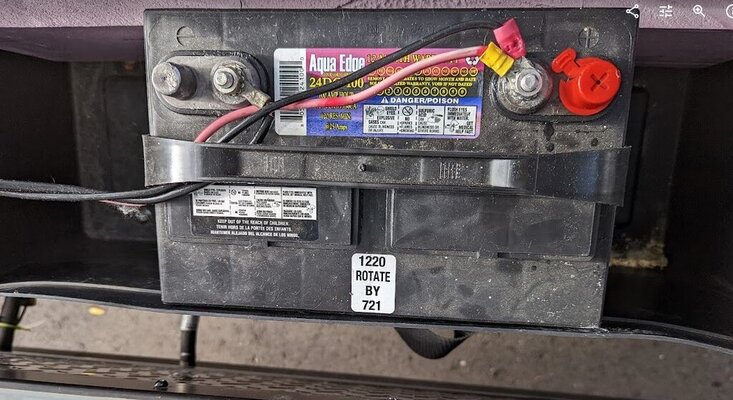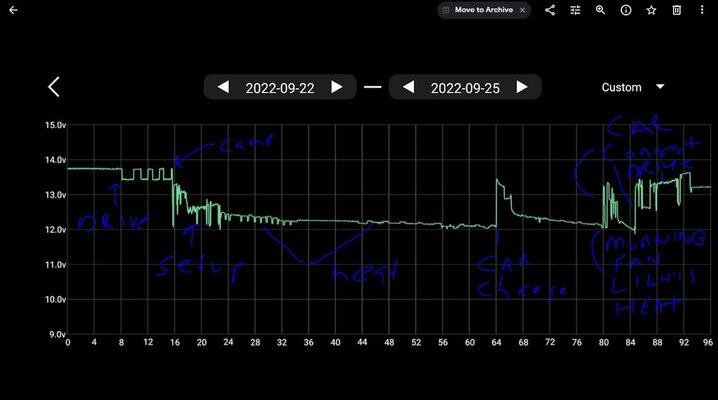PaulBates
Well-known member
I have a new to me 2020 Flagstaff Hardside Popup - T21FSHW. It came with a double battery box with one battery in it.. this one Aqua Edge Tournament Series Deep Cycle Marine Battery Part 24DC100. I read the recommended battery primer links where it mentioned marine batteries can be kind of deep cycle and kind of not. So, here goes:
Story: (see pic of the graph)


Story: (see pic of the graph)
- I used it recently at a nat forest campground sans plug in... eg, on the battery. On arrival at camp I switched the 3 way fridge from 12v to gas. Turned the healthy gas heater on and watched on a battery meter decline due to 12v fan usage... better than I expected. Turned the tstat down at bed time to high 50s. The next day hit 50% and my battery monitor, which the software was designed for a car, turned red as expected. But no operational problems.
- Sticker on the battery says 12/20, rotate 7/21. The previous owner indicated it was stored outside somewhere.
- There's a WFCO converter that the battery meter proves is faithful to managing the 3 usage modes per the manual
- We're not chronic boondockers.. sometimes a night at a rest stop or at most 2 nights in the woods like the trip above, followed by a drive home or several days on plugin power
- Someday I'll investigate the wiring and put in 2 matched real deep cycles in the box if its ready
- Based on the story and the graph, I'm looking for experienced opinions on what's likely to happen if I use this battery beyond 50% as I'm looking forward to a dual battery electric upgrade.
- Not sure I'm in a hurry for solar as it feels like a lot of expense and work for something that maybe delays running out a little... and we tend to prefer shady campsites


